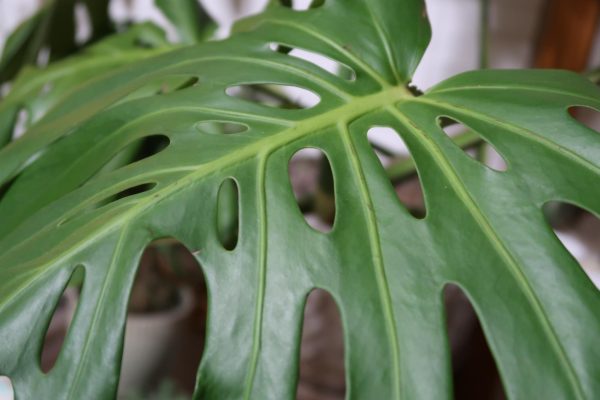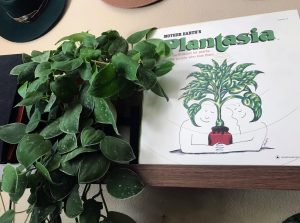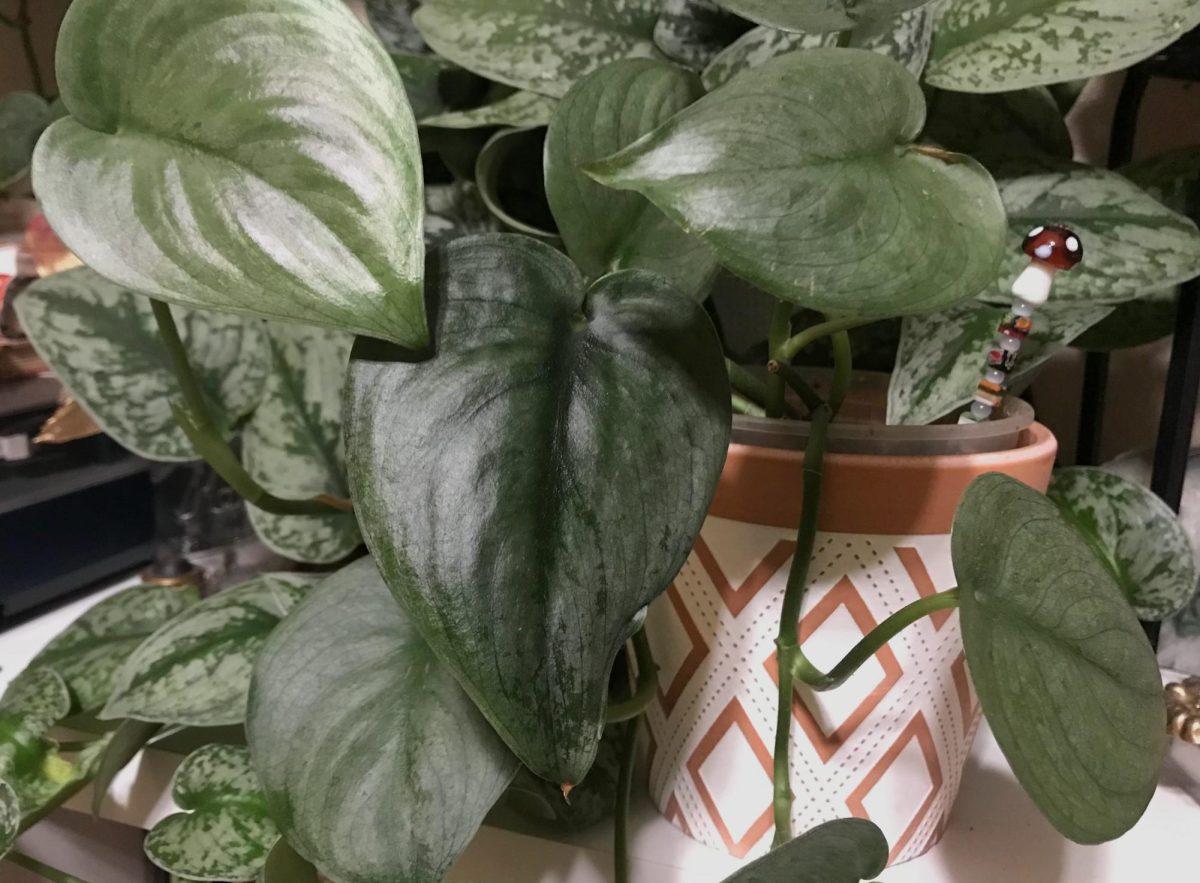New nubs of growth are sprouting from the “silver hero” plant on the shelf by my window. I know they are new, because they were not there two days ago when I last looked.
They will continue to protrude from the main stems until small, almost neon-bright green leaves unfurl. Over time, the leaves will grow thicker and less delicate and take on a metallic, silver sheen. I’ve watched the process several times already, and yet each leaf still seems like a fresh miracle.
The plant’s full name is Scindapsus pictus silver hero, and it arrived in my mailbox just over a year ago. I ordered it online, and was unsure how it would fare, shipping in winter weather. But it has thrived, all the more so after I recently moved it closer to the window.
Plants need very few things to survive, compared to us humans. Water and light are the main elements necessary for their success. For them to truly thrive, you can provide them with fertilizer, pruning, repotting and misting. The experts will recommend the latter, but truly, the core requirements are water and light, not too much or too little of either.
I can’t say exactly when I started collecting houseplants, but the pandemic certainly didn’t help the habit. Stuck at home, it felt life-affirming to fill my space with green plants. Ever since, I’ve been tending to anywhere from 20-30 houseplants at a time, and learning from each and every one.
The best thing about becoming a plant fanatic is the community it provides. In trying to find a rare plant or a killer deal, I’ve met some of the kindest, most interesting people.
Sure, sometimes there is an element of risk in meeting up with unknown folks from Facebook Marketplace, but in my experience — taking reasonable precautions — there’s also an immense possibility to connect with others over a shared obsession.
I’ve met retired women who pour their time and energy into cultivating beauty via the tropical plants in their living room windows. One invited me inside, showed me her setup, gave me detailed instructions on how to care for the plant I was buying from her, and filled my hands with small, rooted cuttings before I stepped out the door.
The groups on social media can be a source of drama — fun in its own way, if I’m being honest — but they’re also an avenue for members to share their newest finds and receive affirmative responses. Your family may not be able to understand why you’re so excited over yet another plant, but Susan on Facebook will be sure to wish you congratulations.
I’ve also found my community’s “Take a Plant, Leaf a Plant” stands. These stands, most often in people’s front yards, are a spot where plants can be traded, but it’s not uncommon to see people leave other items they think someone else may enjoy: custom pots, seeds, toys for children and fresh fruits and vegetables.

I’ve also learned from my houseplants that growth takes time. The Scindapsus I mentioned earlier seemed dormant for about six months. I wondered if it was going through shock from the shipping process, or if I was watering it wrong. But then, one day, I noticed the smallest spike of a new leaf emerging and it gave me hope.
Few things in life are immediate, at least not the good stuff. Growth is especially varied, and it requires certain elements.
My plants that are more established and comfortable seem faster to shoot out new leaves, while others require coaxing. Sometimes I need to move them around to find the spot that is right for them, or give them more care. Sometimes I just need to leave them alone. It’s a process to determine what is best, but it is rewarding to see the results.
Even when I’m doing everything right with a plant, there are seasons of growth and seasons of rest. Some will vine multiple inches over the summer, but throughout the winter they conserve their energy. I have come to recognize this quiet period does not mean the plant will never grow again, only that it is paused for the moment.
I’ve learned from my plants that sometimes I have to let go. Everything has a lifespan. The new leaves I enjoy watching emerge will not last forever. Eventually, they brown, and hopefully they give way to another fresh leaf. Sometimes they do not.
Despite my best intentions, plants die. I have killed houseplants through overwatering, underwatering, dropping them, putting them someplace too dark, and I believe even from looking at them wrong. And on some occasions, a plant just dies, with no reason I can easily ascertain.
Most houseplants will not live forever. There are stories about jade plants, peace lilies and Christmas cactus passed through family generations, growing larger with each decade. There are also countless dumpsters and compost piles full of the remains of the houseplants that didn’t make it.

I’ve had to let go of some of the plants I have loved, and I think I can say I’ve only cried over one. I can enjoy the ones that are short-lived for their brief beauty and appreciate the longevity of the ones that have survived for years. Both bring me joy.
Perhaps most importantly, I have learned about the importance of cultivation from my plants. They take a consistent type of attention. I cannot ignore them for a week and expect that they will all be perky and happy.
A plant, as simple a form of life as it is, requires care. This ritual of watering, rotating, checking and trimming is therapeutic to me, as well as the plant.
Days when nothing else has gone right, I can take the time to tend to my houseplants and know that the work will yield results. Other days, when I want to rot in bed and get stuck in negative thought spirals, I drag myself up with a sigh, knowing that if I don’t water my plants I’ll regret it later.
They have made me recognize more about myself. As a human, I also require water and sunshine at the very least, but see the most improvement after consistent care and time.
With the right nutrients, patience and acceptance, there can be new growth.
Heather Taylor can be reached at [email protected].











